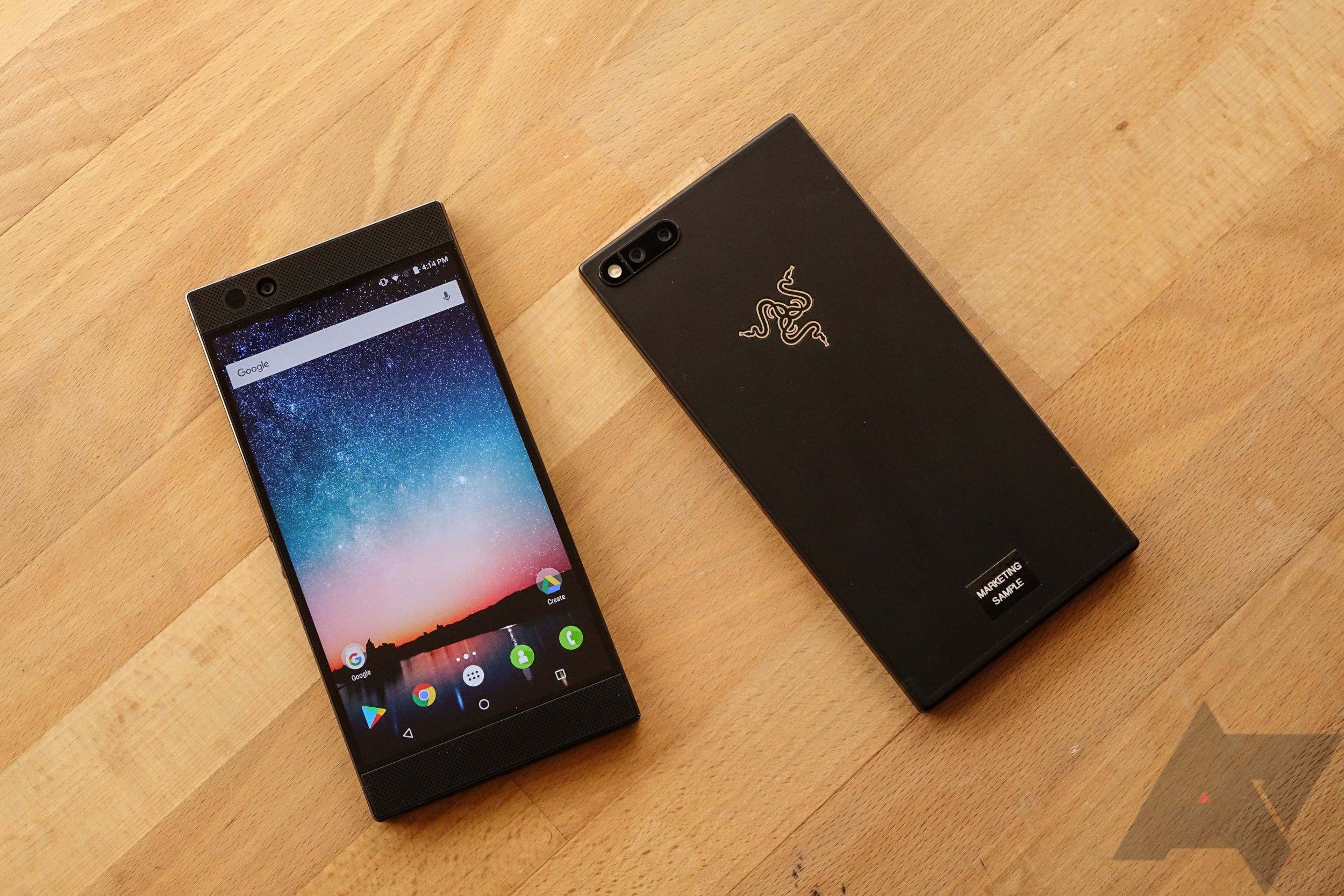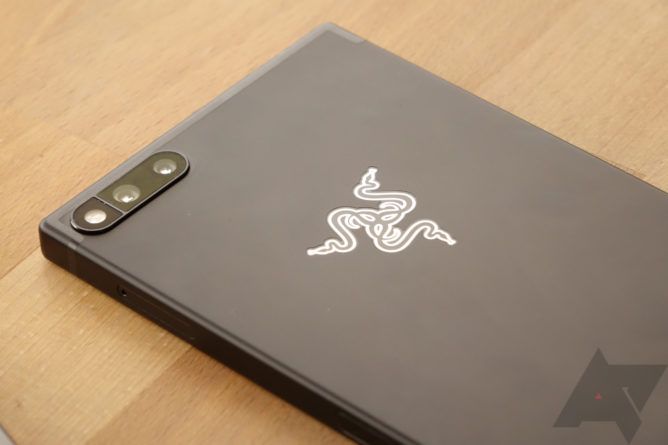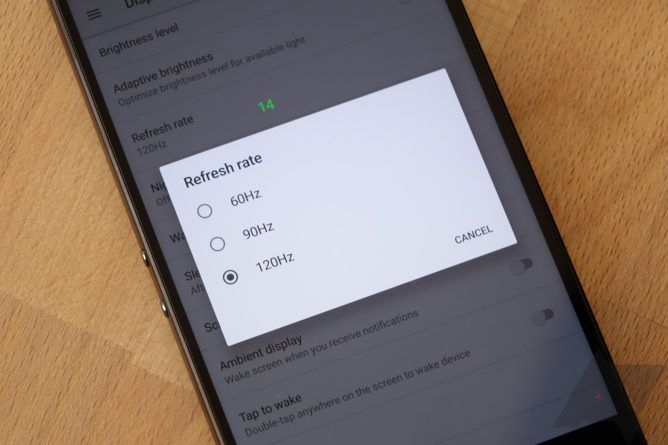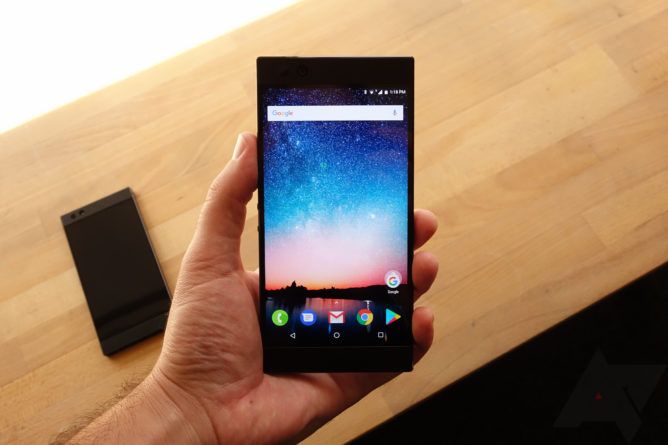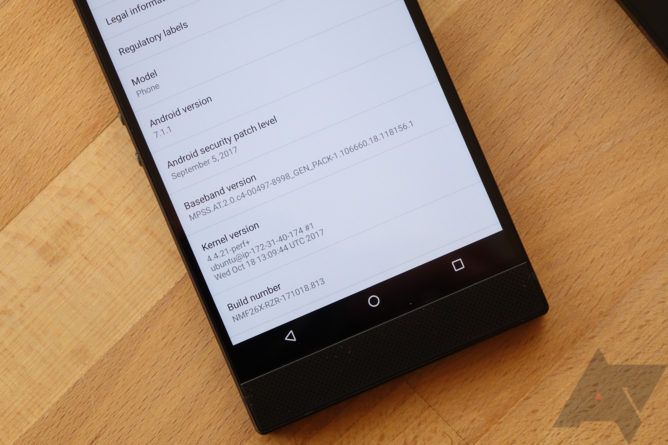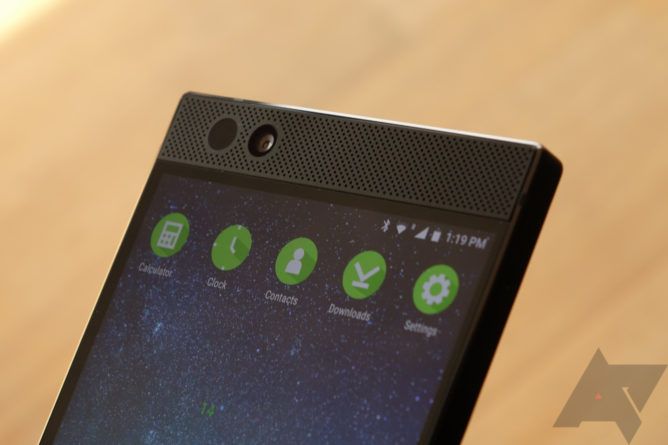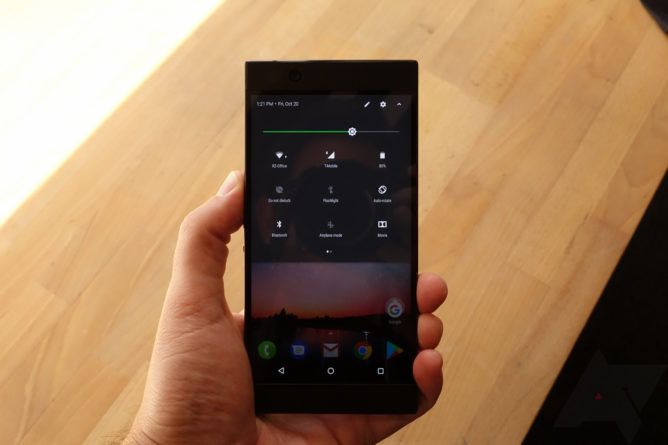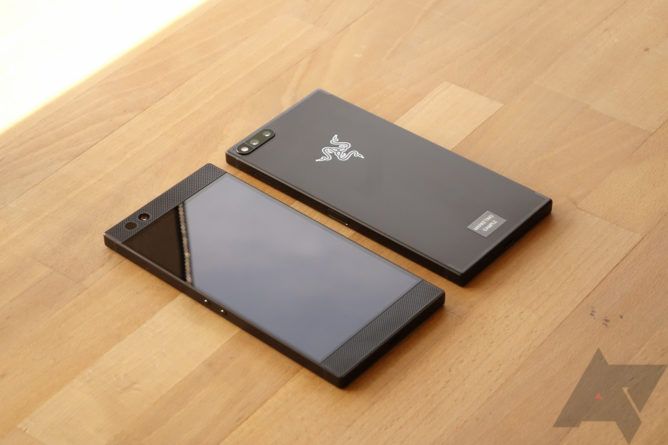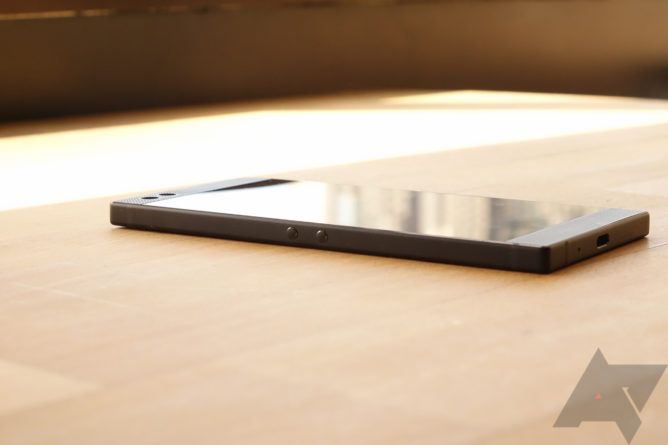When Razer purchased Nextbit last year, fans were understandably concerned that the company might be gobbled up by the gaming-focused brand for its intellectual property and engineering talent, without explicit intent to produce another smartphone. Well, those concerns can (obviously) be laid to rest: Razer built a phone. And by Razer, I mean the former Nextbit team working inside Razer. It's called the Razer Phone. Creative, I know.
One look at the Razer Phone will have you saying "Nextbit Robin 2.0." The styling is clearly derivative of Nextbit's, down to the sharply squared-off edges and large bezels. But gone is the Robin's two-tone paint scheme, instead replaced with a black rubberized finish designed to resist fingerprints and add grip. A rather large Razer logo is emblazoned on the back of the phone (surprise!), and Razer will even make a limited run of them available with the logo in the company's trademark green finish (ew).
I had a chance to spend some time with the Razer Phone at the company's offices, and I came away impressed. While the Razer Phone packs all the specifications - and then some - you'd expect of a modern high-end smartphone, its greatest asset is the amazing 120Hz IGZO LCD display. It's just amazing.
120Hz really does make a huge difference
If you've ever used a high refresh rate gaming monitor (120Hz+), you'll immediately understand what I mean when I say the difference between 60Hz and 120Hz is night and day noticeable. Nobody is going to fail to see it. 120Hz looks insanely smooth, while 60Hz by comparison looks a bit janky and jumpy, especially when you switch between the two.
Basically all modern smartphones use display panels capped at 60Hz of refresh, meaning they refresh 60 times per second. Android is designed, in turn, to run at 60 frames per second (FPS) for this reason. To you and I, a smartphone that runs at 60FPS all the time may well look extremely smooth. Until you put it side by side with a phone that refreshes twice as fast.
The Razer Phone's Sharp IGZO LCD refreshes at 120Hz, and Razer has worked with Google to get Android to render properly at 120FPS to match the screen's capabilities. The results are genuinely impressive. I have never seen a smartphone that runs so buttery smooth. It's kind of incredible.
Notably, Razer will ship the phone set to 90Hz of refresh for power consumption reasons, but you can go into the display settings and change it to 120Hz if you want. And when it comes to third-party apps supporting the higher FPS cap, your mileage will vary. Razer is working with some major game developers to ensure their apps will run at the full 120FPS when possible, but many games out there will still be locked at 60FPS even when the panel is set to 120Hz refresh mode.
Razer says the phone is shipping with 7.1 because getting Android to run at 120FPS took some extra time and effort
Unfortunately, without recording a 120FPS video, this is really hard for me to demonstrate, but take my word for it: it's absolutely obvious in person.
The downsides to this high-refresh panel? Well, IGZO screens do sit a bit farther below the display glass, at least on this particular phone, and it is an LCD. That means some black-to-gray casting at certain angles, and I can't really comment on the overall quality of the screen in terms of colors and maximum brightness. It seemed OK during my demo, but that was a controlled environment without much opportunity for comparison.
Bezels with a purpose (read: really loud speakers)
The Razer Phone has the most powerful speakers I've ever heard on a smartphone. Turned all the way up in the conference room I was demoing the phone in, I had to talk very loudly over them to be heard. So, you definitely can't say Razer isn't making use of those rather chunky bezels.
Do people actually want a smartphone with insanely loud speakers so much that they are a central design consideration? I don't really know. I do know the speakers on the Razer Phone are extremely impressive, but I'm uncertain the extent to which a significant part of the consumer market will really care, even gamers.
A "gamer" phone, whatever that means
And that is who this phone is positioned for, by the way. You probably guessed as much, but the Razer Phone is in keeping with Razer's gaming-first ethos, albeit in a way that is a lot hazier to me than the company's lineup of mice, keyboards, and laptops.
The Razer Phone sports a custom heat pipe cooling solution, offering what Razer says is best-in-class thermal performance for a Snapdragon 835 smartphone. Couple that with the 120Hz refresh display panel and 8GB of RAM, and Razer says this phone is designed to provide the best gaming experience on any Android device.
Content partnerships like a mobile-fied version of Final Fantasy XV (don't get too excited - it's an animated, kind of on-rails version of the game) are supposed to support this narrative, but I just don't see it. A gaming-first smartphone requires a gaming experience that is significantly better than that on other smartphones, and I don't really get the sense that the Razer Phone is a lot better at mobile gaming than any other high-end smartphone released in 2017 with a Snapdragon 835.
Sure, it might play longer with its 4000mAh battery, it might perform better with its enhanced thermals to avoid throttling, and it might look nicer with its 120Hz display panel. But these are incremental improvements on experiences that most people are generally satisfied with. Not to mention, most mobile gaming experiences have been designed around the capabilities of your typical smartphone - I don't think a lot of developers are going to step up to the plate wanting to optimize for the (and really, limited) set of special capabilities Razer's phone offers. NVIDIA tried this with the Shield Portable and Shield Tablet. It didn't work then. Why is it going to work now for a phone?
Still, a promising smartphone
The odd gaming stuff aside, the Razer Phone looks like a pretty great smartphone. Between the 120Hz display panel (which I love), a largely stock Android experience (Oreo will come in Q1 2018), and a fair price point for the rather robust specifications ($699), I think the Razer Phone is going to raise some eyebrows.
Unfortunately, being GSM-only and without any carrier partnerships in the US, it's probably going to be a bit player in the larger smartphone market. I don't see it being a breakout success, and it's not the kind of thing I'd recommend to a friend or family member. Razer probably expects as much, and will more likely be targeting its existing customers in the PC peripheral and gaming space, not mainstream consumers.
If nothing else, the Razer Phone is very promising. The Nextbit team is alive and well inside Razer, and they've built a phone that is genuinely impressive and novel. We'll have a review of the Razer Phone for you some time in the coming weeks, but my initial impressions are definitely positive. Say hello to the Nextbit Robin 2.0.

